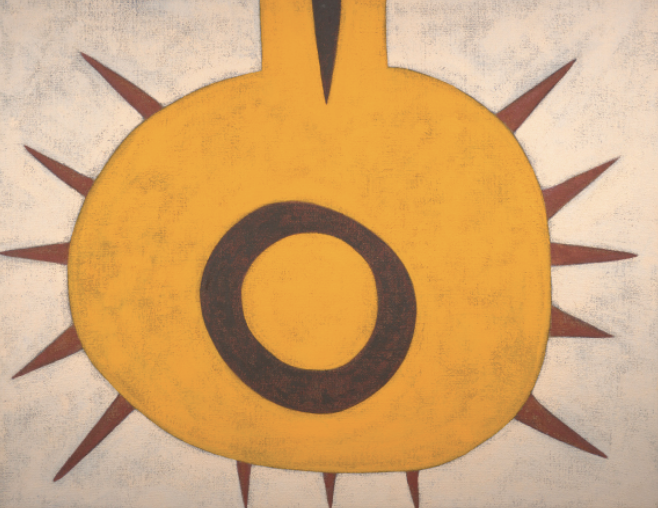Appropriation involves the intentional repurposing of existing and often iconic imagery to create new meaning. Within Art History, appropriation has long been used as an artistic tool. From Andy Warhol’s soup cans and Barbara Kruger’s slogans, to Marcel Duchamp’s “L.H.O.O.Q.” and Yasumasa Morimura’s recreation of “Girl with a Pearl Earring”, artists have often turned to appropriation to highlight their message. It was first formally utilised by artists during the Cubist movement, finding new significance alongside the rise of consumerism. Today, it is a powerful tool that many Australian Contemporary artists choose to integrate into their practice. Here are 5 Australian artists, appropriately appropriating:

The Bathers 1989/2008
c-type photograph ed. 9/12
printed by Colour Factory, Melbourne, 2008
93.5 x 110cm
Sold for $8,750
© Anne Zahalka/Copyright Agency 2022
Anne Zahalka
Anne Zahalka’s body of work is diverse, but one of her most well-regarded images is “The Bathers” 1989/2008, in which she directly refers to Charles Meere’s iconic painting “Australian Beach Pattern” 1938–40. Zahalka has used the same composition as the painting but has changed the characters to be more culturally diverse, thus altering the stereotypical view of Australian culture and challenging traditional representations of the beach.

Light 2006
oil on canvas
114.5 x 146.5cm
Sold for $38,750
© John Kelly/Copyright Agency 2022
John Kelly
Whilst not consistent across his entire oeuvre, appropriation has often found its way into the work of John Kelly. In 2006, Kelly produced a series called “Sun of Moonboy” – a play upon Sidney Nolan’s early work, “Moonboy” 1940. Nolan’s polarizing portrait did not altogether receive favourable artistic and critical opinion at the time. Kelly has often drawn upon these significant chapters in Australian history, reinventing characters and icons in his work. His “Sun of Moonboy” series also incorporated the circular sun icon from the Australia Council logo, used by Kelly in his long-standing protest against the Council and its art funding policies. Appropriation has gone one step further with this series, as Kelly permitted images from the series to be used on the labels for Tasmania’s Moo Brew beverages.

The Claiming of Things 2012
single-channel digital video animation, colour, sound
© Museum of Contemporary Art, Sydney, Michael Reid, Sydney, and the Artist
Joan Ross
Joan Ross frequently utilises appropriation in her current work, specifically images and artworks from Colonial Australia. Her iconic digital animation, “The Claiming of Things” 2012, in the collection of the Museum of Contemporary Art in Sydney, takes a painting by John Glover as the backdrop and uses it as the stage for an enactment of colonisation.
“I have started with one of my favourite John Glover paintings and have changed it around and added my own perspective on colonisation and what ‘being civilised’ is … I use fluoro as a metaphor for colonisation. I saw the influx of fluoro after 9/11 – in a way, fluoro represents a type of colonising, but also a type of fear.” (Joan Ross, 2012)

The Peckin Order 2007
acrylic on canvas
150 x 150cm
© Milani Gallery, Brisbane and
The Artist
Richard Bell
Richard Bell’s artworks aim to bring conversations around racism to the mainstream. Bell plays with the appropriation of abstract expressionism and pop art through artists such as Roy Lichtenstein, Jasper Johns, and Jackson Pollock. Modifying the text that accompanies each image is what reinvents the image to align with Bell’s politics.
OLIVIA FULLER / Head of Fine Art
Banner Image (detail): John Kelly, Light 2006, oil on canvas, 114.5 x 146.5cm. Sold for $38,750. © John Kelly/Copyright Agency 2022
March 2022
